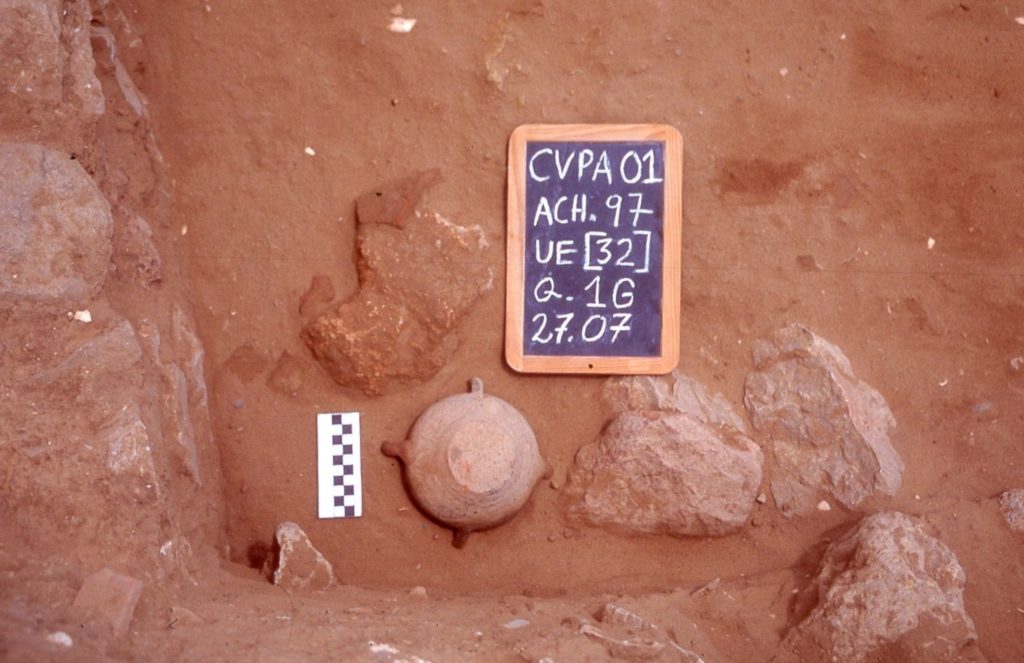
At 7 am, the view of the river and the sea in front of Cacela is enchanting. The archeology team arrives in silence, interrupted only by the wheelbarrows carrying the materials. The excavated areas are observed to review the objectives of the new workday. Each one picks up his excavation material: bucket, peak, shovel, brush and spoon.
The terrain is divided into numbered squares like in naval battle… 19E, 18D, etc. Each participant in the excavation concentrates on his square, digs in synch, matching his work with that of his neighbour.
The archaeological excavation follows the principle of stratigraphic overlay. That is, generally, in the deposition of layers on the ground, the oldest layer is below the most recent layer.
The land is faced with respect, a mystery that is unveiled little by little, through the rigor of the excavation, the care for details, the careful record in the field notebook. And the identification tags of bagged materials, the lists of these bags, the sheets of the different layers of earth - which archaeologists call stratigraphic units -, the records of walls, the collapse of walls and roofs of houses, the collection of samples.
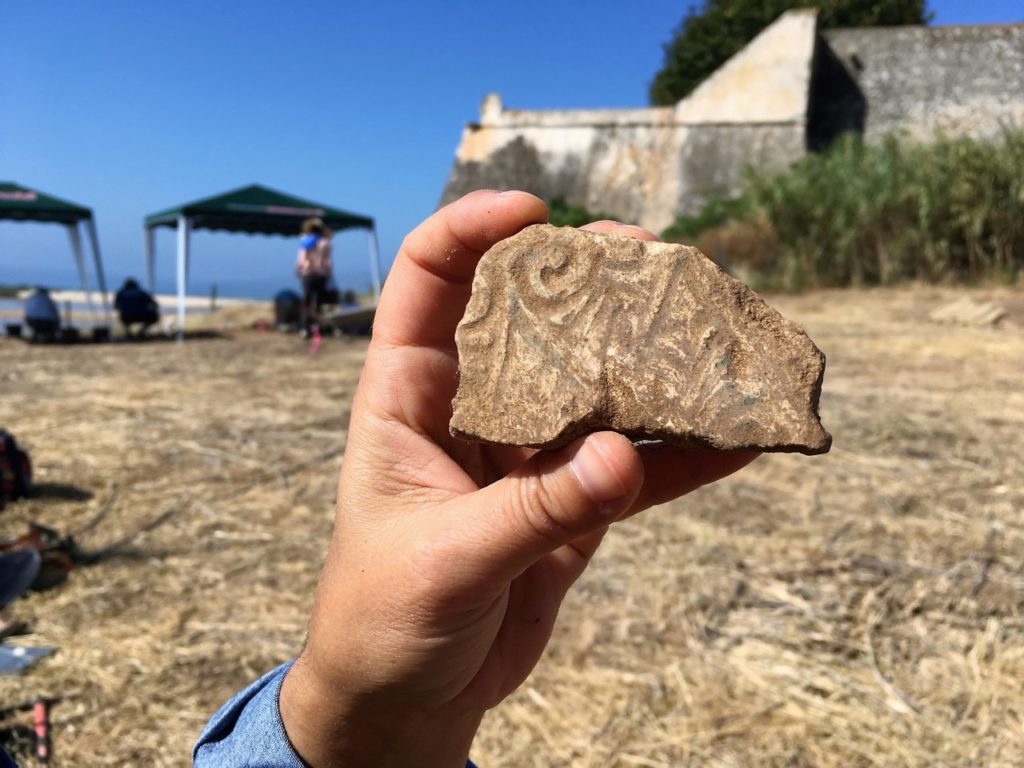
And the conversation comes to life. Impressions are exchanged about the container to which the ceramic fragment still found today (a decorated carving, perhaps?), about the delicacy of its decoration, the type of coating, the identification of the animals to which the small bones belong. , the diversity of shells…
Underneath the land tilled in the modern period, we find the Christian necropolis that we talked about in the previous chronicle (dated from the second half of the XNUMXth century and most likely in use for a century or two).
Underneath this “city of the dead” — that's what the term “necropolis” means — we find the space of the living: an Islamic neighborhood built in the Almohad period, during the XNUMXth and XNUMXth centuries.
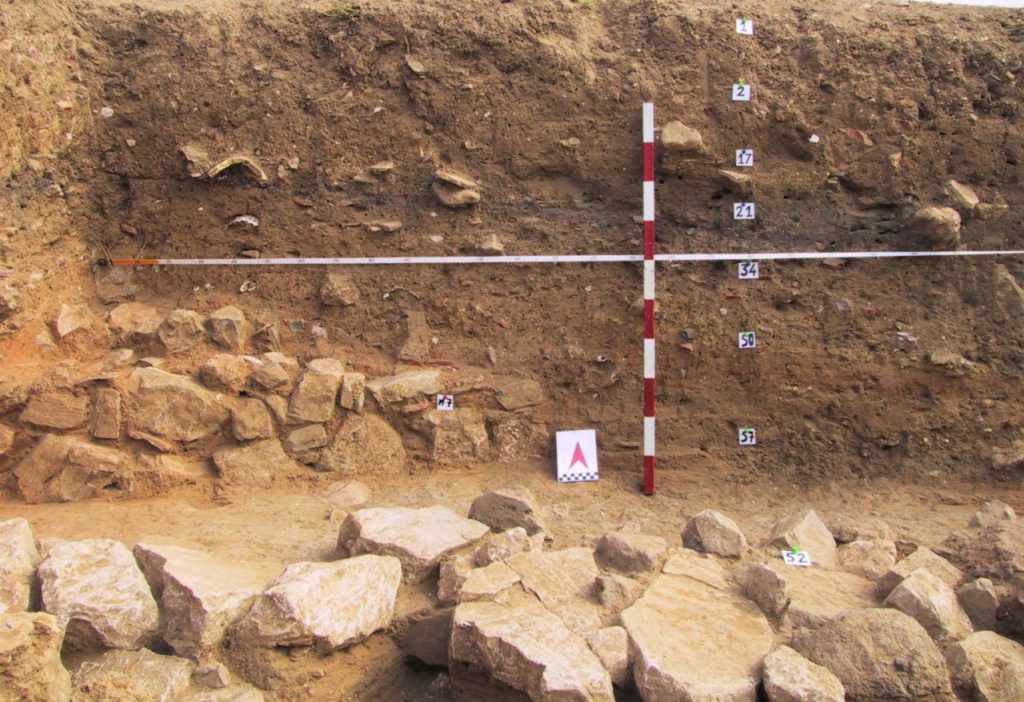
This neighborhood is located outside the perimeter of the Castle of Cacela, next to the Ribeira das Hortas. Islamic houses sit directly on the rocky substratum (dating from the Miocene), which would have been cut into terraces. This is a very common engineering in Islamic neighborhoods and there are several parallels in Al-Andalus. To the south, the layout of the neighborhood runs parallel to the cliff, in the west-east direction.
Part of this neighborhood will have, in fact, suffered extensive destruction by the erosion of the cliff, a situation much aggravated by the construction of the modern road that gives access to the beach. We do not yet know its northern limit, but from the excavations that have already been done, we know that there are streets, delimited by houses and walls. These streets had rainwater drainage pipes, demonstrating the planning in their construction.
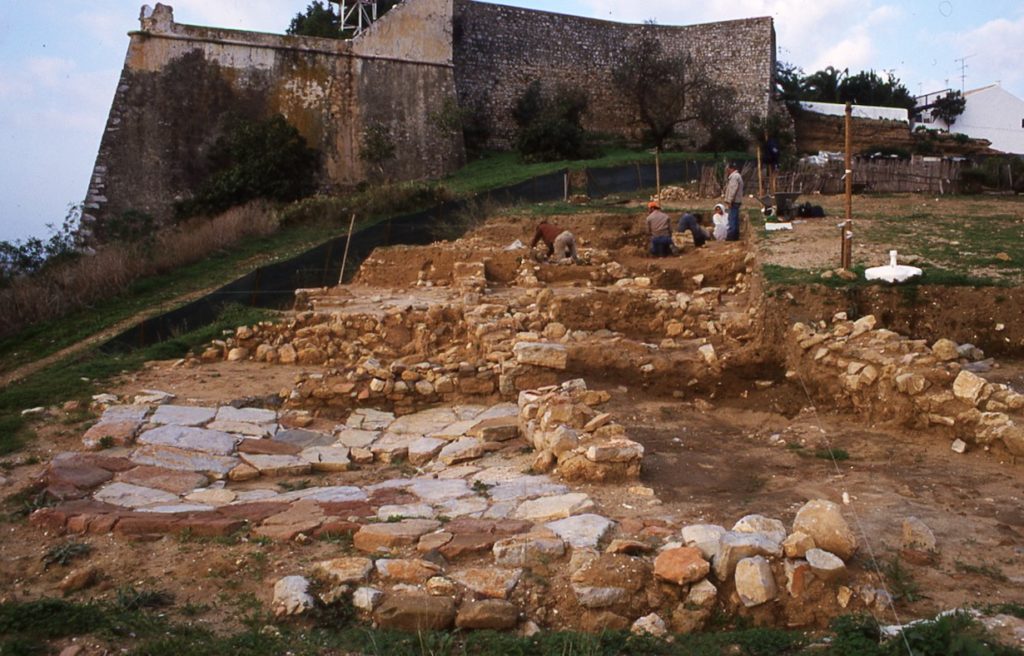
The dwellings found are typical of the medieval Islamic world. With few openings to the outside (domestic experience is private and the house is essentially female), these houses are built around an uncovered patio, surrounded by other compartments such as the atrium, the lounge and the kitchen.
In them we did not find wells or other water collection system for domestic use. The proximity of the river facilitated access to this important element. There is a well nearby that may date back to the time when these houses were inhabited.
The foundation of the houses was made of walls built in masonry and the upper part of these walls was made of mud, an earthen construction.
With the exception of the patios, the compartments had a clay floor and a straw tile roof laid with a mass of lime, on reeds deposited on wooden beams. A type of construction that has lasted until contemporaneity.
Sometimes extra fixings (nails, clay) were applied to prevent the roof from being destroyed by the strong coastal winds it was subjected to.
Four structures have been identified so far: three would be dwellings, another, with a slightly different layout, may have been a warehouse.
One of the most interesting cases is Casa I, located at the eastern end of the neighborhood, closer to the river. With a square plan, it has an area of approximately 80 m2. The entrance to the lobby/lounge is through a gap of just over a meter.
In the center of the house, prevails the central courtyard, where the floor is made of large slabs of limestone, schist and sandstone. This floor appears to have collapsed during an earthquake. In the courtyard, a shaft of column in marble from the Roman period was also found, which would have served as a seat for its residents.
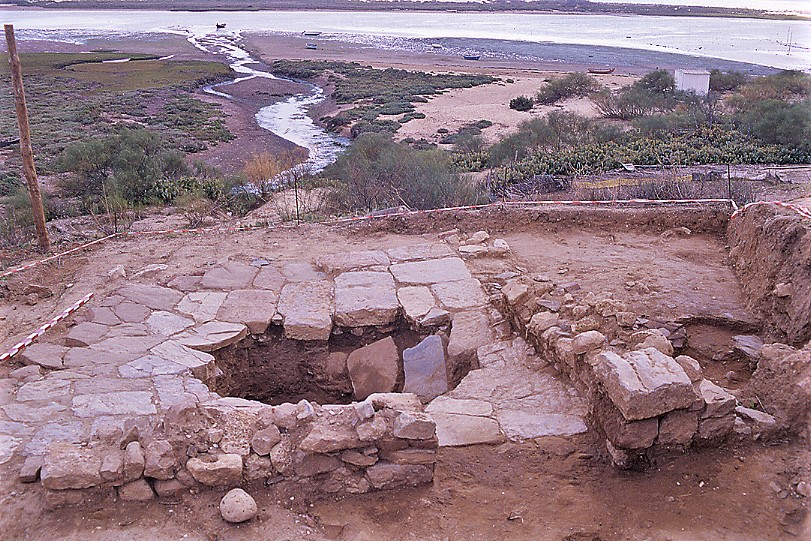
The kitchen was located to the west of the courtyard. It had a rectangular floor plan and niches for small storage were found on one of its walls. In one of its corners, the circular fireplace was made of pieces of charred tiles.
Next to it, we identified a heap of ashes and coals with ceramic remains and several concave scallop shells (remember that we still have the so-called “soup shells”).
Interestingly, in addition to some fragments of ceramic containers, such as water pitchers, pots and pans for cooking meals, a spherical bell earring was also found—someone dropped it, perhaps while preparing a dinner.
Gradually, the neighborhood was abandoned. Left behind were the remains of the last meals, pieces and containers, which the inhabitants did not take with them. It was garbage, which so well testifies to the life of the past.
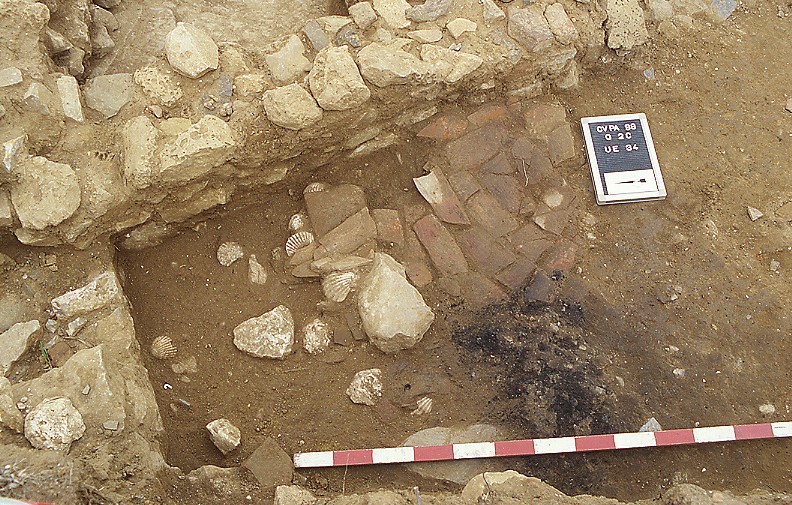
The archeology of the Islamic Quarter of Poço Antigo tells us that it was inhabited by people who seem to have dedicated themselves mainly to land affairs, but also to tasks related to the sea. A community that, in its food, mixed terrestrial resources — we found many remains of sheep and goats, rabbits and chickens — and marine resources — such as oysters, cockles, rays and bream.
Archeology tells us this, but it can tell us even more. But we'll talk about that in the next chronicle...
Previous chronicles on the archeology of Cacela Velha can be read here e here.
If you want to visit the excavation, the Open Day to the public will take place on the 9th of July, from 10am to 00pm. You will be most welcome.
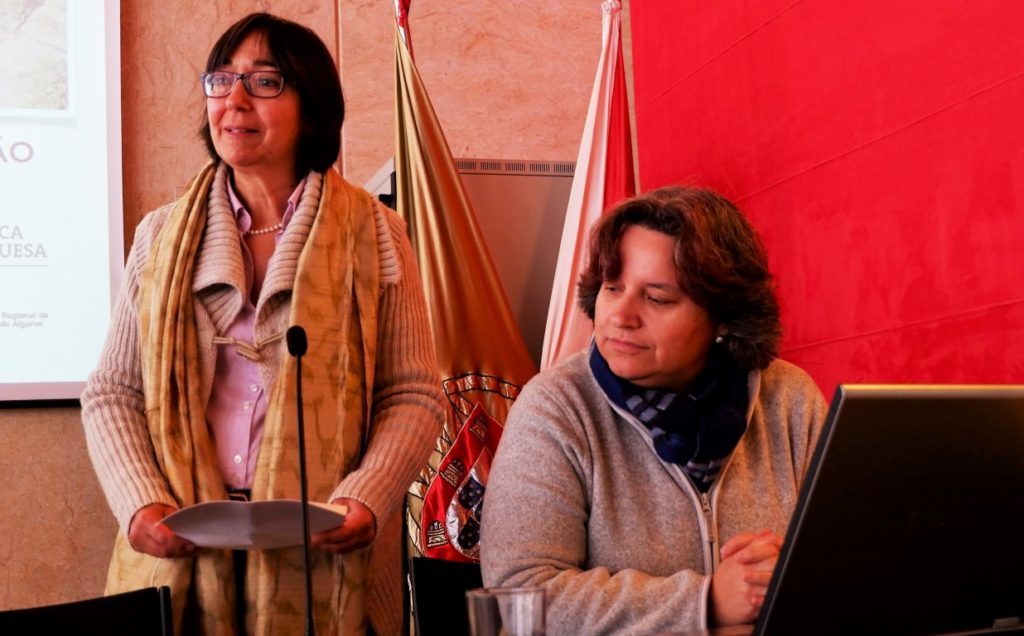 Authors: Cristina Teté Garcia she is a senior technician at the Regional Directorate of Culture of the Algarve.
Authors: Cristina Teté Garcia she is a senior technician at the Regional Directorate of Culture of the Algarve.
Maria Joao Valente is an assistant professor at the University of Algarve.
Both coordinate the archaeological work in Cacela and are researchers at the CEAACP (Center for the Study of Archeology, Arts and Heritage Sciences).

















Comments